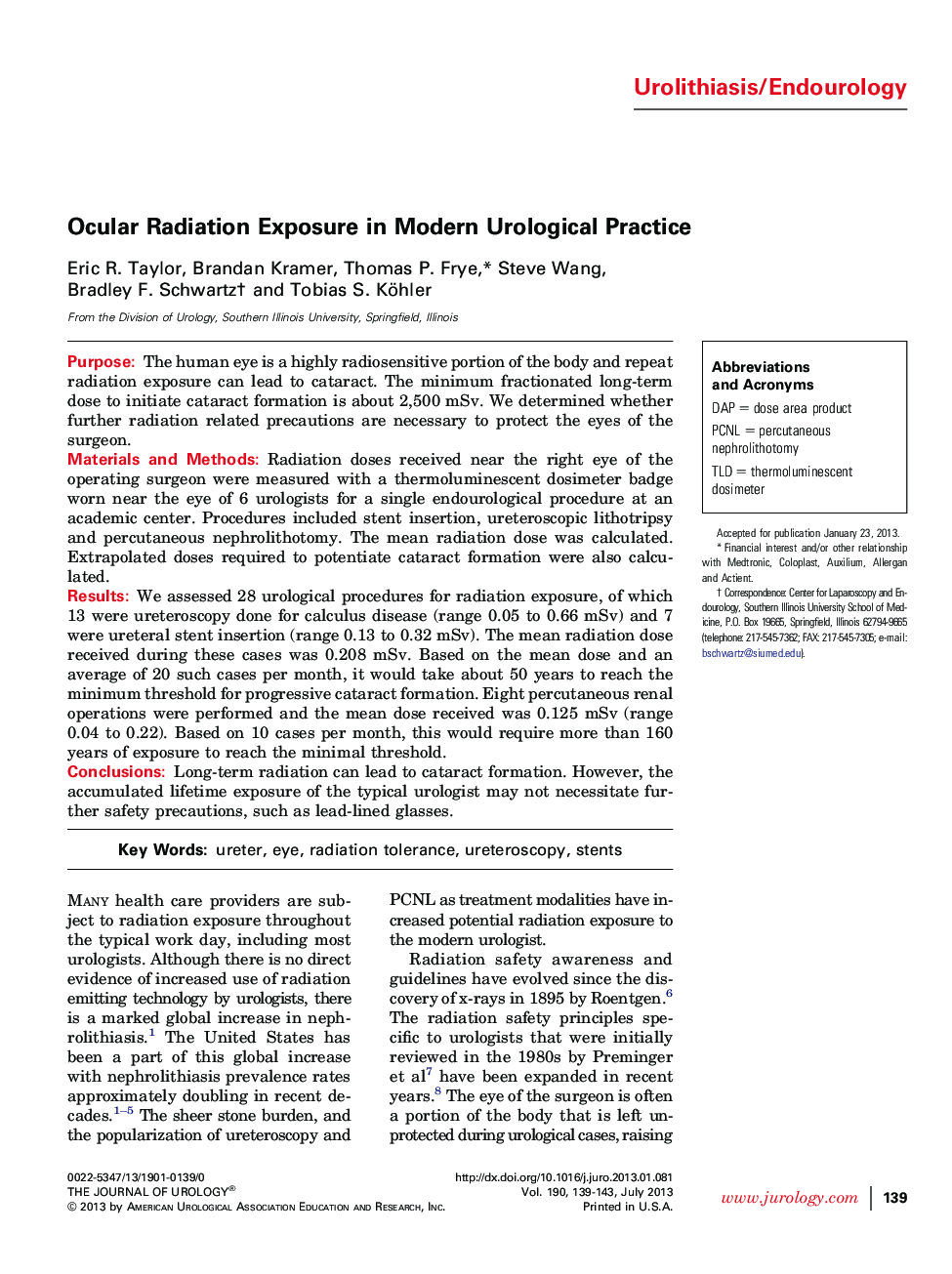| Article ID | Journal | Published Year | Pages | File Type |
|---|---|---|---|---|
| 3866254 | The Journal of Urology | 2013 | 5 Pages |
PurposeThe human eye is a highly radiosensitive portion of the body and repeat radiation exposure can lead to cataract. The minimum fractionated long-term dose to initiate cataract formation is about 2,500 mSv. We determined whether further radiation related precautions are necessary to protect the eyes of the surgeon.Materials and MethodsRadiation doses received near the right eye of the operating surgeon were measured with a thermoluminescent dosimeter badge worn near the eye of 6 urologists for a single endourological procedure at an academic center. Procedures included stent insertion, ureteroscopic lithotripsy and percutaneous nephrolithotomy. The mean radiation dose was calculated. Extrapolated doses required to potentiate cataract formation were also calculated.ResultsWe assessed 28 urological procedures for radiation exposure, of which 13 were ureteroscopy done for calculus disease (range 0.05 to 0.66 mSv) and 7 were ureteral stent insertion (range 0.13 to 0.32 mSv). The mean radiation dose received during these cases was 0.208 mSv. Based on the mean dose and an average of 20 such cases per month, it would take about 50 years to reach the minimum threshold for progressive cataract formation. Eight percutaneous renal operations were performed and the mean dose received was 0.125 mSv (range 0.04 to 0.22). Based on 10 cases per month, this would require more than 160 years of exposure to reach the minimal threshold.ConclusionsLong-term radiation can lead to cataract formation. However, the accumulated lifetime exposure of the typical urologist may not necessitate further safety precautions, such as lead-lined glasses.
